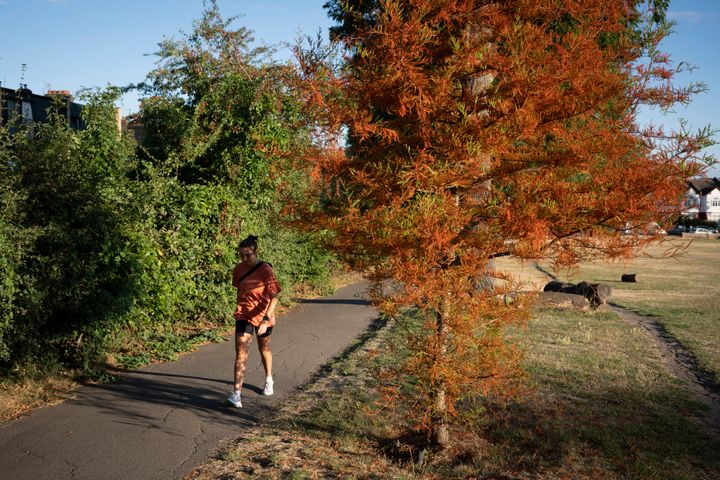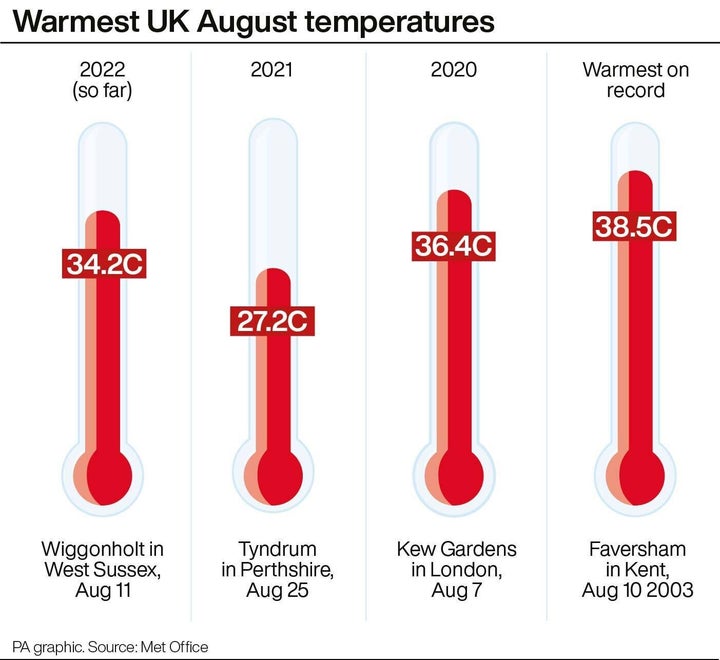
Most of us are not having the best time in the UK right now, what with soaring inflation, the cost of living crisis and sewage scandal and all.
But we’re not the only unhappy ones – trees are suffering, too.
You may have noticed there’s a layer of dried autumnal leaves building up on paths and pavements across the UK, even though we’re technically still in summer and most of the country is enjoying moderate temperatures.
Turns out, the two heatwaves, subsequent drought and floods mean Britain’s trees are not having the best time.
Here’s what you need to know.
Trees and their leaves
Trees shed their leaves every autumn as a means to survive the winter.
Dropping them prevents the water in the cells of the leaves from freezing as temperatures drop – if the water within them froze, the leaves would rupture – and means new ones can grow in their place the following year.
In the meantime, trees move the water into their roots, storing the supply for winter.
During this process the leaves go from green, which allow them to process sunlight for “food” during the summer, to orange and reds as the tree withdraws water.
This is usually prompted by reducing sunlight levels, as the days get shorter and leaves struggle to produce enough “food” for the tree.
Why is it different for trees this year?
The changing colours of the leaves and the early leaf fall indicates that the trees are distressed following the record-breaking temperatures of July, the almost-as-hot August days, coupled with a lack of rainfall across the summer.
According to Leigh Hunt, thesenior horticultural adviser at the Royal Horticultural Society, trees are “shutting up shop”.
He told the BBC: “It’s giving the appearance that we’re already in autumn but the days are too long for those natural autumn processes to begin.
“Physiologically, the plants are not responding to autumn conditions; that’s why we term it loosely as ‘false autumn’.”
He described it as one of the most severe years he’s ever seen in terms of tree damage.

The shocking change in weather means many trees may end up dying, especially younger ones that do not have an elaborate root network set up to fall back on.
It’s not just trees that have been affected, either.
Fruits and nuts are also ripening much faster due to the bizarre climate, which means wildlife food supply could be seriously disrupted. Algae growth, accelerated by the heatwave, can also block out sunlight for other plants in rivers too, again hitting the ecosystem hard.
So, can the trees recover?
Hunt told the BBC there’s a chance that trees which have only lost a few leaves, or experienced slight yellowing, should recover if there is enough rainfall.
And if there’s a heavy downpour in the coming weeks, trees might even go for a “second spring” and grow more.
But, there is a key moment where it is no longer possible for trees to replenish the water it loses through its leaves, meaning it dries up completely.
In a bid to survive through other means, some trees might end up producing more seeds to try and reproduce.